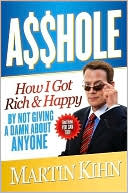Natural History of the Rich: A Field Guide
A tantalizing, droll study of the idiosyncratic existence of the very rich, through the unexpected lens of the naturalist.\ Journalist Richard Conniff probes the age-old question "Are the rich different from you and me?" and finds that they are indeed a completely different animal. He observes with great humor and finesse this socially unique species, revealing their strategies for ensuring dominance and submission, their flourishes of display behavior, the intricate dynamics of their pecking...
Search in google:
A tantalizing, droll study of the idiosyncratic existence of the very rich, through the unexpected lens of the naturalist. Publishers Weekly "It might be difficult to see the connection between a rich woman swanning around in her Manolo Blahniks and some underpaid clipboard-wielding biologist slogging through the bush in battered Tevas," Conniff writes, but readers of this unusual and delightful exploration of the richest members of the human species will understand that connection and a whole lot more. Journalist and essayist Conniff compares the super-rich to the animal kingdom in providing a frame of reference for their behaviors and actions. Butterflies and moths, which camouflage their true colors when not with their own kind, provide a context for discussing concealment, display and the "inconspicuous consumption" of those born to money: the signs of wealth are displayed subtly to be recognized by those in the know. Conniff finds an animal model for philanthropy in a bird called the Arabian babbler, which, after forcing a gift of food on a companion, "lift[s] his beak in a special trill... like a socialite posing for an event photographer at the Breast Cancer Awareness barbecue." Other chapters provide insight into mating habits, dominance (the rough way and the nice way) and other rules of social intercourse. A keen observer of both animal and human nature, Conniff who has written about the natural world for National Geographic and about the rich for Architectural Digest neither patronizes nor demeans his subjects (after all, he notes, we all hope to be rich some day). He merely uses them and the natural world to illuminate a class of people and range of behaviors that few among us will ever have the opportunity to observe firsthand. 8 pages of b&w illus. (Oct. 21) Copyright 2002 Cahners Business Information.
Acknowledgments7Introduction: Naturally Rich?9Ch. 1Scratching with the Big Dogs: How Rich Is Rich?23Ch. 2The Long Social Climb: From Monkey to Mogul39Ch. 3Party Time: The Dawn of the Plutocrat57Ch. 4Who's in Charge Here? Dominance the Rough Way72Ch. 5Take This Gift, Dammit!: Dominance the Nice Way100Ch. 6The Service Heart: Subordinate Behaviors117Ch. 7Why Do Rich People Take Such Risks?: Display by Grandstanding144Ch. 8Inconspicuous Consumption: Display by Muted Extravagance157Ch. 9Living Large: The Habitats of the Rich191Ch. 10The Temptation of Midnight Feasts: Sex, Anyone?224Ch. 11Family Business: Caught in the Perpetual Dynasty-Making Machine257Epilogue: A How-To Guide for Alpha Apes289Notes299Bibliography317Permission Credits327Index329
\ From Barnes & NobleIn Every Creeping Thing: True Tales of Faintly Repulsive Wildlife, award-winning journalist Richard Conniff tracked bloodhounds and bats. Now he turns his keen naturalist's eye on another forbidding species: the very rich. Comparing these bejeweled, opulently clothed creatures to baboons and bull elephant seals. What other book would liken J. P. Morgan and John D. Rockefeller to dominant mandrill monkeys or compare disdain for the nouveaux riche to the pig-grunting of mountain gorillas?\ \ \ \ \ Frans de Waal“In this witty, well-written field guide, Richard Conniff studies the rich as a biologist studies the mighty mountain gorilla. In the process, he brings the rich down to earth as not only merely human, but distinctly animal.”\ \ \ Desmond Morris“A delightful field-study of the habits of the rich and famous, full of acutely observed insights.”\ \ \ \ \ New York Sun“Droll and delightful....Conniff's charm and fun-loving approach make his book a pleasure from start to finish.”\ \ \ \ \ New York Times Book Review“A feast of research findings...[Conniff's] archly comic tone matches his subjects perfectly.”\ \ \ \ \ Boston Herald“Amusing and insightful.”\ \ \ \ \ Dallas Morning News“Conniff proves that his naturalist's approach to understanding the rich...really does generate insights and even understanding.”\ \ \ \ \ New York Magazine“Hilarious.”\ \ \ \ \ San Diego Union-Tribune“Conniff [is] Truman Capote-and Dominick Dunne-like...a valuable field guide...endlessly fascinating.”\ \ \ \ \ The Day“Conniff manages to pull off the ideal mixture of detached amusement and actual scientific fieldwork.”\ \ \ \ \ The Financial Times“This book...may change for ever our perception of the urge to make money.”\ \ \ \ \ Town and Country“A witty compendium of gossip, anecdotes, history and sociobiological research.”\ \ \ \ \ Smithsonian Magazine“A literate, gossipy and altogether engaging romp.”\ \ \ \ \ Jonathan Yardley - Washington Post“Clever, perceptive and unfailingly interesting.”\ \ \ \ \ Dominick Dunne“As one who has long had a fascination with the idiosyncrasies of the possessors of great wealth, I was intrigued with Richard Conniff's book The Natural History of the Rich. It is anecdotal, witty, and wonderfully informative.”\ \ \ \ \ Washington PostClever, perceptive and unfailingly interesting.— Jonathan Yardley\ \ \ \ \ Publishers Weekly"It might be difficult to see the connection between a rich woman swanning around in her Manolo Blahniks and some underpaid clipboard-wielding biologist slogging through the bush in battered Tevas," Conniff writes, but readers of this unusual and delightful exploration of the richest members of the human species will understand that connection and a whole lot more. Journalist and essayist Conniff compares the super-rich to the animal kingdom in providing a frame of reference for their behaviors and actions. Butterflies and moths, which camouflage their true colors when not with their own kind, provide a context for discussing concealment, display and the "inconspicuous consumption" of those born to money: the signs of wealth are displayed subtly to be recognized by those in the know. Conniff finds an animal model for philanthropy in a bird called the Arabian babbler, which, after forcing a gift of food on a companion, "lift[s] his beak in a special trill... like a socialite posing for an event photographer at the Breast Cancer Awareness barbecue." Other chapters provide insight into mating habits, dominance (the rough way and the nice way) and other rules of social intercourse. A keen observer of both animal and human nature, Conniff who has written about the natural world for National Geographic and about the rich for Architectural Digest neither patronizes nor demeans his subjects (after all, he notes, we all hope to be rich some day). He merely uses them and the natural world to illuminate a class of people and range of behaviors that few among us will ever have the opportunity to observe firsthand. 8 pages of b&w illus. (Oct. 21) Copyright 2002 Cahners Business Information.\ \ \ \ \ Library JournalConniff takes on lifestyles of the rich (and variably famous) for the bookish and hip, that is, for an audience receptive to his jokes. And the jokes fill every page of the very funny, vaguely nausea-inducing travels he makes through the realms of the extremely wealthy, who do, of course, turn out to be very different from you and me. As Conniff finally has it, we are all pretty much the same, except that the billionaires beat us in every category, including access to sex, overhousing, and general nastiness. Conniff (Spineless Wonders: Strange Tales from the Invertebrate World), a respected freelance journalist on the popular natural world beat, here extends to book length a piece he did on the culture of Monaco for National Geographic a few years back. Most conventional of the allegedly wise ideas he gleefully whacks are that old money is classier than new and that the rich mean it when they say there is more to their lives than money and power. Recommended for libraries of all types, with two caveats: Conniff is not immune to small errors of detail, and some of his humor is too deadpan to let readers distinguish outrageous hyperbole from assertion of fact. Even so, most will find this a fast-moving, instructive read.-Scott H. Silverman, Bryn Mawr Coll. Lib., PA Copyright 2002 Cahners Business Information.\ \ \ \ \ Kirkus ReviewsConniff, who specializes in the animal world (Every Creepy Thing, 1998, etc.), casts an inquisitive eye on the human race's big dogs in their diverse habitats, from the Breakers to Blenheim. Rich folk have bigger parties and better tchotchkes; they also live longer than the rest of us. "It's good to be king!" observed the great philosopher Mel Brooks, and Conniff uses many parallels in the animal world to show just how good it is, explaining as well how the feral people in charge got that way. Chimps and champs, of course, have essentially the same DNA, and even rats and plutocrats possess pretty much the same genome. What's true of gibbons and gorillas is true of CEOs and movie stars. Messrs. Gates, Turner, and Murdoch compete in scent-marking territories. Benevolent pro bono show-offs are much like simian bonobo show-offs, but the human alphas outdo their animal cousins when it comes to hoarding in a world where "more" always beats "enough, already." The author surpasses Veblen in his analysis of the habits of the seriously affluent in matters of food, hobbies and sex, travel, nesting and sex, high jinks, foibles, inbreeding and sex. As with lesser fauna, size matters, and so does body language. The animal illustrations are entertaining, and the fun is equaled by illustrative chitchat about people from the venerable Churchills we have read about in Burke's Peerage to the new Internet maharajas we have read about in supermarket tabloids. A limited gene pool, thin women, fat wallets, and flattery separate these special individuals from common folk. Amusing anecdotes about nouveau riche with a penchant for ballooning, and old aristocracy who "grew up with servants and practiced beingincompetent from birth," serve to illustrate Conniff's point that among the truly loaded, "even the sane ones often had a special relationship to reality." A clever, invaluable zoomorphic study with a wealth of information on what makes the rich tick. (Photo insert) Author tour\ \






